

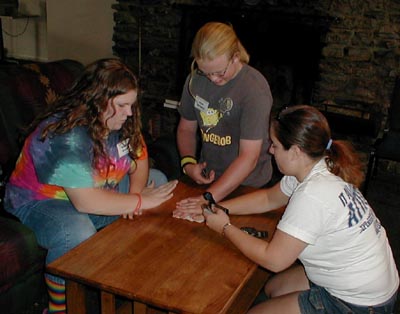 As soon as breakfast was over, the cards broke out in the living room area outside the dining room. Karla Evans, Kyle Driscoll and KC Vetter slap-happily play "Egyptian War." |
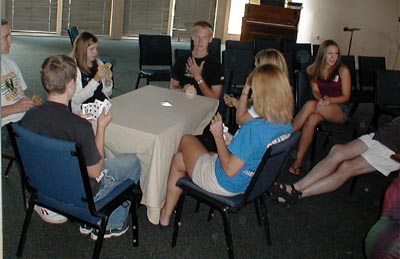 A few feet away, alumnus Alan Eller instructs a table of new students on a different card game. |
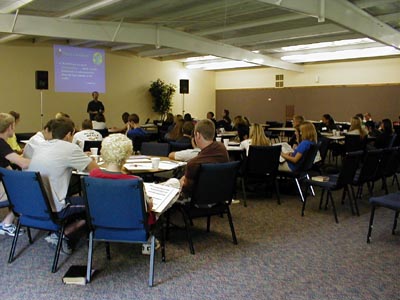 Rick Wade teaches the foundational session on understanding worldviews. Probe highlights three: naturalism, pantheism, and Christianity. Many of our lectures will refer back to this lecture, and by the end of the week the students will have a much greater grasp of these "big three." |
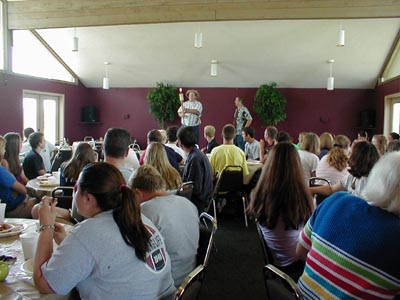 Scotty Wayne Wayne (the root'nest, toot'nest, sharp-shoot'nest cowboy of all time) makes another appearance at lunch with the Ozark version of the Olympic torch to recruit world-class players for water polo during the afternoon free time. |
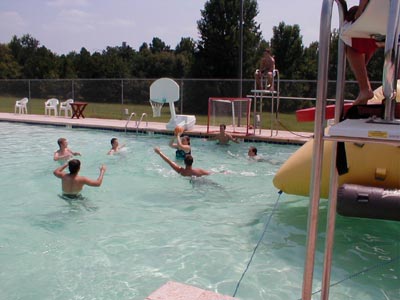 This pool was designed with Probe's conference in mind for games such as water polo and water basketball. |
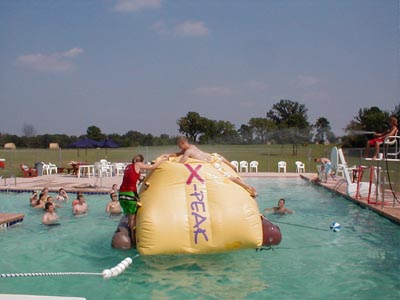 A gigantic inflated pyramid in the diving area provides a place for students to knock each other off in a water version of "King of the Hill." Britney Bearden and Alan Eller compete for the top slot. JJ the Ozark lifeguard is spraying water on the pyramid to reduce friction by preventing it from drying out and making it possible for people to slide down the slide. |
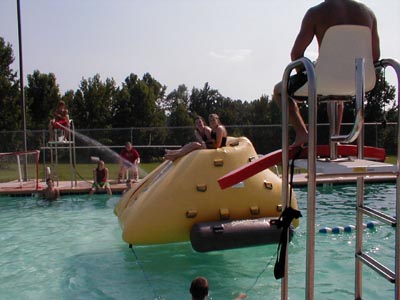 Julie Jackson and Sarah Veres conquered the hill! (The other students dubbed this photo "Queen of the Hill.") |
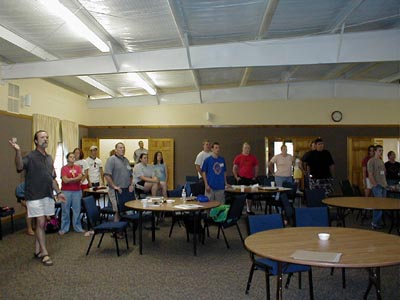 Evening worship |
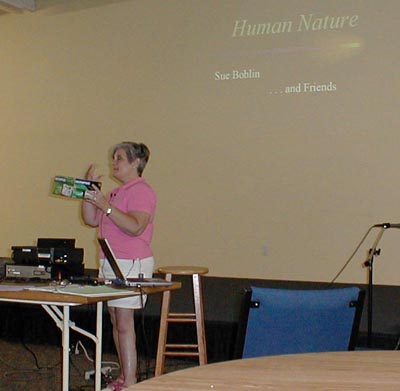 Sue Bohlin introduces the "Human Nature" lecture by reviewing the three major worldviews with the help of a prop. The box represents the cosmos, the entire universe. Naturalism says that the box is all there is; there is nothing outside the box (no supernatural beings or activity). Pantheism says that an impersonal god is the box, permeates the box, is one with the box. Christianity says that once upon a time, there was no box, there was just God, who created the box but is not part of the box; He is outside the box. He has come into the box in the Person of Jesus Christ, and has communicated with us in the box through revelation, but He is separate from the box. |
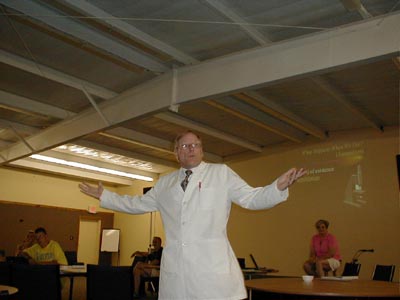 This lecture poses three questions and sees how the various worldviews answer them: What is the purpose of life? Are human beings good, evil, or neither? And, What happens at death? Representing the naturalistic worldview, Ray Bohlin role-plays Dr. E.O. Wilson, Harvard entomologist and articulate evolutionist. Dr. Wilson assured the students that the only purpose in life is to survive and reproduce. Students were able to ask questions of the visitors and there were always too many questions for the time frame. |
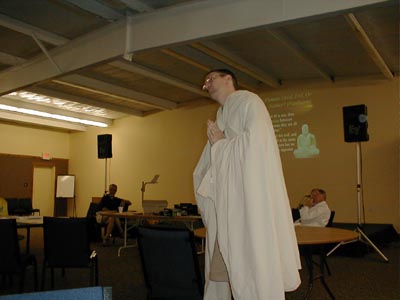 Probe intern Gene Herr visited as pantheistic spiritual advisor Schwing Bling Bling. He told the students that reincarnation is what happens at death, an endless cycle of birth, death and rebirth with the only hope for escape being "enlightenment," the absolute dissolution of the individual. This guru dismissed any questions he didn't like by saying that everything is an illusion anyway. |
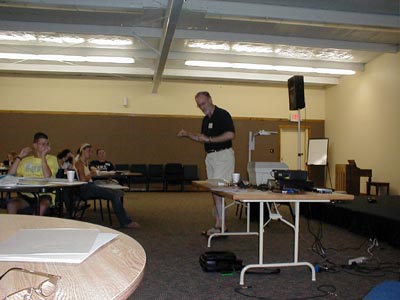 Greg Grooms role-played a second naturalist, Dr. John Smith, an existentialist professor of philosophy at the University of Texas. At the conclusion of the Human Nature session, he became himself again to teach the session on "An Introduction to Ethics." |